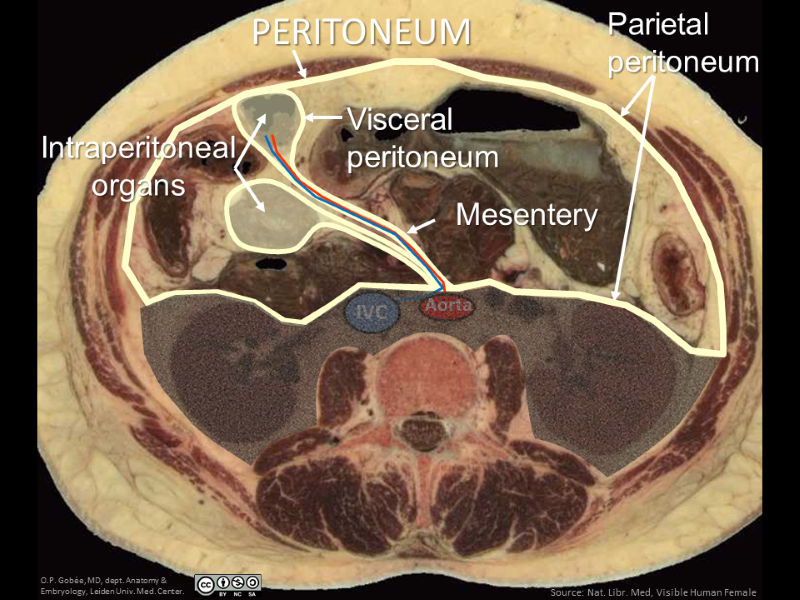Intraperitoneal structures
Characteristics:
- (Largely) surrounded by peritoneum
- Directly visible and accessible after opening the peritoneal cavity (and moving the greater omentum aside)
- Mobile (most)
 Intraperitoneal
Intraperitoneal
By O.P. (Paul) Gobée, dept. of Anatomy and Embryology, Leiden University Medical Center, last update: 5 Arpril 2018


Note: this is a somewhat confusing term, as the organ does NOT lie inside the peritoneal cavity, but that’s how it’s been called for centuries, so we’ll stick to it.
The locations of visceral and parietal peritoneum and of mesentery are also indicated on the images.

The same holds for the transverse colon and the the sigmoid colon. Further intraperitoneal organs are the liver, the stomach and the spleen (not shown on the images).
This video shows the characteristics of intraperitoneal structures in a dissection specimen.
This is a fragment of a longer video that shows all three peritoneal locations. See minutes 0:44 - 1:56
(1m12s) 
Characteristics:
 View license
View license If you use this item you should credit it as follows:
"Intraperitoneal" by , license: CC BY-NC-SA

Comments